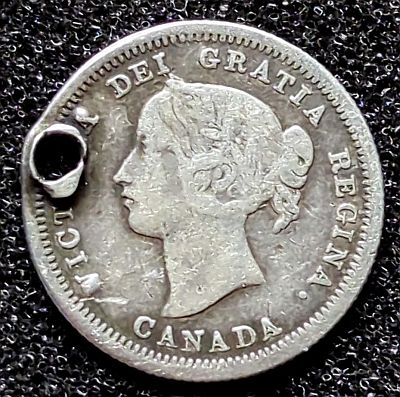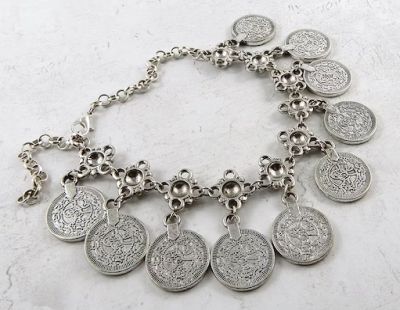Early Canadian coin with a hole

History
Similar to many other nations, Canada had been inhabited by indigenous peoples for many thousands of years prior to the arrival of Europeans in the 15th century. Both the French and English established colonies. Following the Seven Years’ War of 1756-63, France ceded territories in Canada to Britain. In order to better govern the largest of these, the British Parliament passed the Quebec Act of 1774. One of the constitutional foundations of Canada, the Quebec Act accommodated the principles of British institutions to the reality of the province. It allowed religious freedom for Catholics and permitted them to hold public office, a practice not then allowed in Britain. The Quebec Act restored French civil law while maintaining British criminal law.
The now British Province of Quebec was divided into Upper and Lower Canada in 1791. The two provinces were united as the Province of Canada by the Act of Union 1840, which came into force in 1841. In 1867, the Province of Canada was joined with two other British colonies of New Brunswick and Nova Scotia through Confederation, forming a self-governing entity. “Canada” was adopted as the legal name of the new country and the word “Dominion” was conferred as the country’s title
The creation of the Province of Canada led to a new standardized rating for coins in the newly united province that took effect in April 1842. The British gold sovereign was valued at one pound, four shillings, and four pence in local
currency, while the US$10 gold eagle was valued at two pounds, ten shillings. Both coins were considered legal tender. Spanish (including Spanish colonial) and U.S. silver dollars with a minimum weight of 412 grains were also made legal tender with a value of five shillings and one pence.
At this time, efforts also began to move to a decimal-based currency system and to introduce a government issue of paper currency. As well as friction from personal interests, the British were keen to implement a monetary system based on pounds, shillings and pence.
The currency act of 1852, updated in 1857, paved the way for a standard, national Canadian currency. In 1858, the first official Canadian coins were minted.
Obverse
As a British colony, Canada’s coins featured the monarch, Queen Victoria on the obverse. The portrait is by Leonard Charles Wyon, chief engravers at the Royal Mint. The text around reads “VICTORIA DEI GRATIA REGINA” which translates as “Victoria Queen by the grace of God”. The country name is below.
Interestingly, unlike Britain, Canada did not change the portrait of the Queen over the years. As a result, the Victorian 5 and 10 cent coins became the longest issued coins in Canada’s history, being minted from 1858 until the death of Queen Victoria in 1901.
Reverse

The reverse is relatively simple, featuring the value over the year, maple boughs either side, and the crown of Queen Victoria above. The other early circulating coins of Victorian Canada were all a similar style, with variations.
Holed
This example is holed, a fact which generally decreases the desirability, and hence value, of coins. In this case, it did mean that I acquired the piece for much less than a coin in similar condition would have been worth without damage.
The hole is interesting here, as I would normally expect, for use as a pendant, keyring or charm, you would normally find the hole at the top of the coin.
In this case, my best guess is that the piece may have one of numerous coins made into a bracelet. This would also explain the use of the 5 cent coin, which is quite small, at just under 15.5mm (0.6 inch) diameter. From the damage above and below the final hole, it looks like they had several tentative attempts before making the hole.

A bracelet made with coins. Could this Canadian coin have come from something similar? What do you think? Let us know in the comments!
While discussing the coin and the potential reasons for the hole on Mastodon, Ben W. Brumfield put forward another interesting reason for coins being holed: “My paternal grandmother passed down a “teething” half used as a teething ring for her and her siblings, as well as for her mother and her siblings. It’s a US half dollar from 1833 (we think — possibly 1883?) which is very worn down and has a hole punched through it for a string or ribbon.”. Looking into it, I found a number of references on that use, from CoinWorld, Genealogy.com, Blind Pig & the Acorn, NGC and Coin Community. In the case of this 5 cent coin, I think the bracelet is more likely, as it is a much smaller coin. But the teething coin use is quite an interesting one I wasn’t familiar with and wanted to share as well. What is the most interesting holed or damaged coin you’ve seen? Do share with us on social media!


Leave a Reply